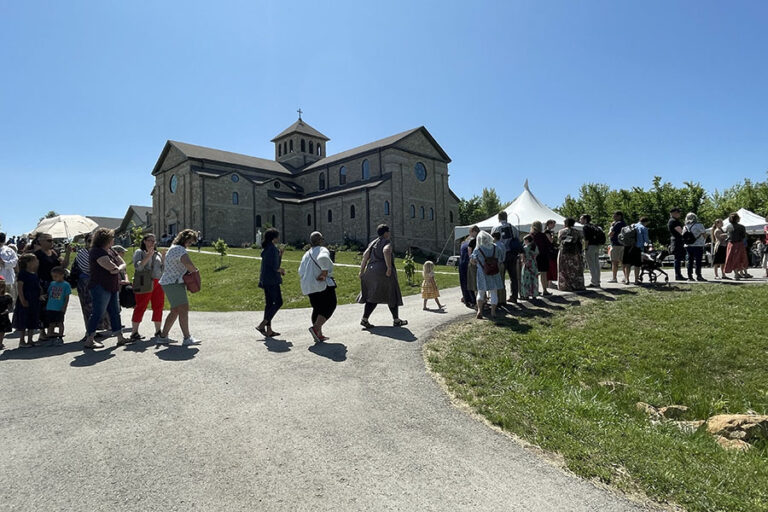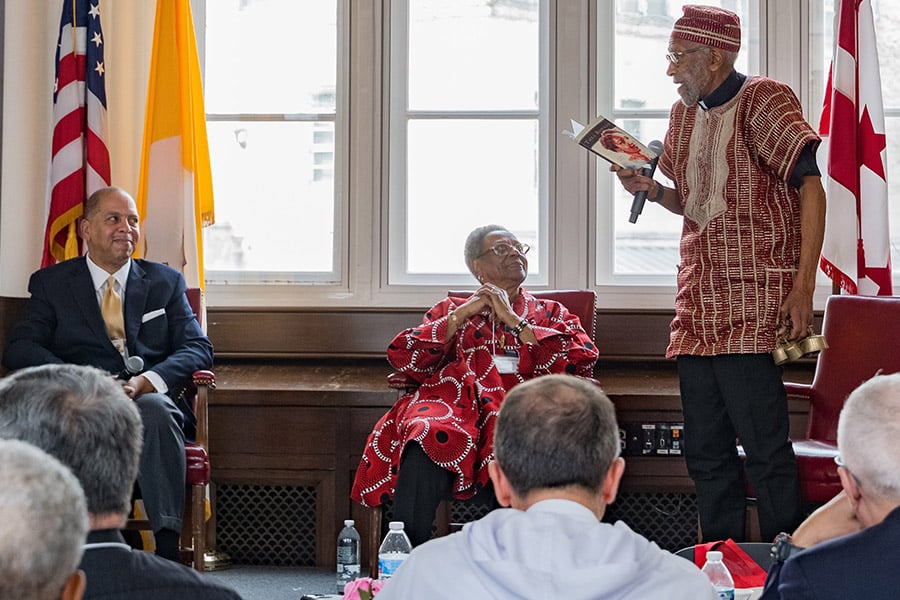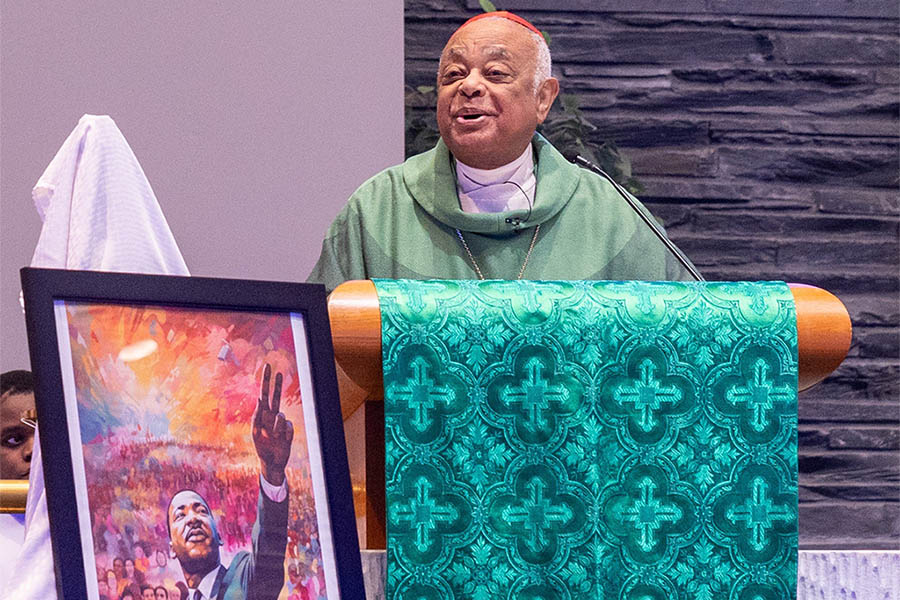GOWER, Mo. (OSV News) — Thousands flocked to a rural Missouri monastery over the Memorial Day weekend to venerate the apparently incorrupt body of a Benedictine nun with visitors telling OSV News the experience has been spiritually powerful for them.
“It’s electrifying. It’s galvanizing the hearts of the faithful and the unfaithful as well,” said Luke Nold of Easton, Mo., a volunteer helping the crowds converging at the Abbey of Our Lady of Ephesus, located outside of Gower. “I’ve talked to people who have come from as far as Colorado, as near as Kansas, Nebraska, Iowa. … northern Minnesota, Michigan, Illinois, Indiana, North Carolina. And some of the stories I’m hearing are just profound. A local mortician came out just in disbelief; this doesn’t happen.”
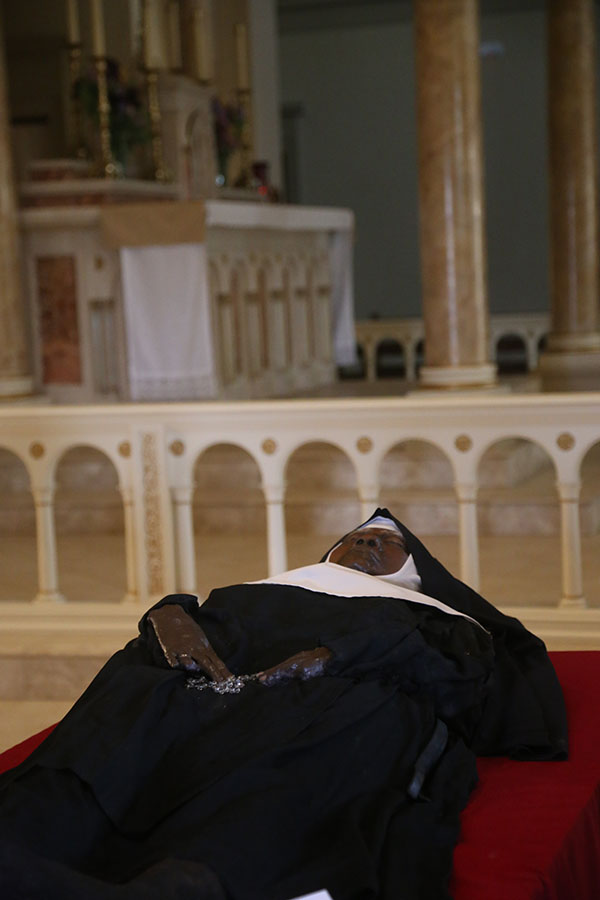
The remarkably intact remains of Benedictine Sister Wilhelmina Lancaster of the Most Holy Rosary have been on display for several weeks at the Abbey of Our Lady of Ephesus. On April 28, the Benedictine Sisters of Mary, Queen of the Apostles had exhumed the body of their foundress to transfer it to a new shrine altar honoring St. Joseph.
Despite a lack of embalming, an in-ground burial in a wooden coffin and water pooling in the grave, both the remains and the habit looked essentially the same as when Sister Wilhelmina died at age 95 in May 2019.
Bodily incorruptibility has long been regarded in both Catholic and Orthodox traditions as a potential — though not conclusive — divine sign affirming an individual lived a life of sanctity. The bodies of more than 100 canonized saints have been seemingly untouched by decay.
A May 22 statement from the Diocese of Kansas City-St. Joseph, Mo., said the condition of Sister Wilhelmina’s remains “has understandably generated widespread interest and raised important questions.” It added, “Bishop (James V.) Johnston is working to establish a thorough process for understanding the nature of the condition of Sister Wilhelmina’s remains.”
As word of Sister Wilhelmina’s remains spread, pilgrims from several states have steadily descended on the abbey, praying before and touching items to the body, which the sisters cleaned and protected with a coating of wax.
The visits intensified ahead of a May 29 rosary procession, after which Sister Wilhelmina’s body was encased in glass at the altar shrine. The steady stream of pilgrims — which one law enforcement official told OSV News numbered “close to 5,000” on just Friday alone of Memorial Day weekend — flowed on either side of the body. They knelt for 60-second intervals before the body, and then passed by a table to touch Sister Wilhelmina’s veil.
Many pilgrims also stopped to spend some time in Eucharistic adoration at the abbey’s church. Outside, hay bales and folding chairs formed makeshift confessionals in the nearby fields.
Volunteers from neighboring parishes — including St. Joseph in Easton and Seven Dolors in Hurlingen — and from Knights of Columbus councils across the Diocese of Kansas City-St. Joseph were on hand to direct traffic, hand out water and food, and shuttle visitors in golf carts.
Maegan Meyers of Lincoln, Nebraska, traveled to the abbey with her family for “love of the saints and to be able to have (her) kids experience that.”
The two-hour journey to see a possible saint in the making was “such a gift,” she said.
“We were just talking about just how prevalent and how loud the culture is, and how very clear it is, the timing of this,” said Meyers. “(We have) just so much gratitude for her witness.”
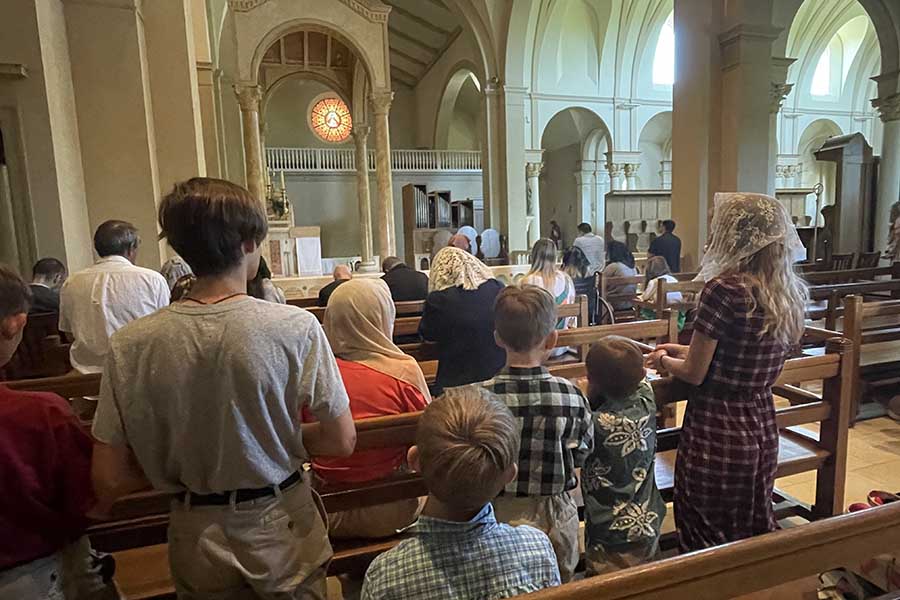
For some, Sister Wilhelmina’s apparently miraculous incorruptibility was a sign of divine approval for her founding of the religious community.
After 50 years as a member of the Oblate Sisters of Providence in Baltimore — a historically African American religious community whose foundress, Mother Mary Elizabeth Lange, is on the path to sainthood — Sister Wilhelmina established the Benedictine Sisters of Mary, Queen of the Apostles in 1995. The congregation uses the older forms of the Roman Rite promulgated prior to the start of the Second Vatican Council: they have Mass according to the 1962 Roman Missal and chant the psalms according to the 1962 Monastic Office. The sisters have even had commercial success with their recordings of chants, topping Billboard’s traditional classic album charts in 2013 and 2014.
Joshua Smith from Auburn, Maine, who attends Mass according to the 1962 Roman Missal, commonly called the “traditional Latin Mass,” said his two daughters are members of the congregation and he saw Sister Wilhelmina while she was still alive. Smith said he finds the nun’s apparent incorruptibility “as some confirmation that we’re on the right path. … It kind of binds us together.”
As an African American, Roberta Crawford of Kansas City, Mo., said it was “even more awesome to know” that Sister Wilhelmina also was Black, and that “her belief was strong.”
“This is kind of a once-in-a-lifetime thing, and it was something we needed to see,” she said. “We’re not Catholic, but we have a belief that we just needed to see it, that it actually happened.”
Through experiences like this, “we still see how God is acting in our life,” said Father Sam, a priest from the Diocese of Tulsa, Okla., who did not provide his last name. He said he was visiting with fellow Hispanic Catholic parishioners.
“God is using these kinds of events to be able to show his power, to help us to understand that God is alive,” the priest said, “so we may trust in him and believe in him.”
Read More Black Catholic Ministry
Copyright © 2023 OSV News

